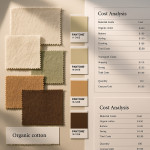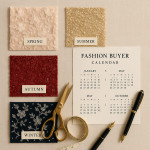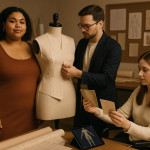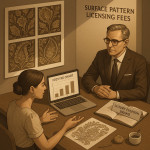Leverage 3D textile mockups: a couturier roadmap to impress online recruiters
3D textile mockups let you demonstrate drape, texture and fit before a single needle is threaded. This guide shows you, step by step, how to create persuasive mockups, where to host them and which storytelling cues convince online recruiters to hit “contact”.
Why 3D textile mockups beat flat sketches in 2025
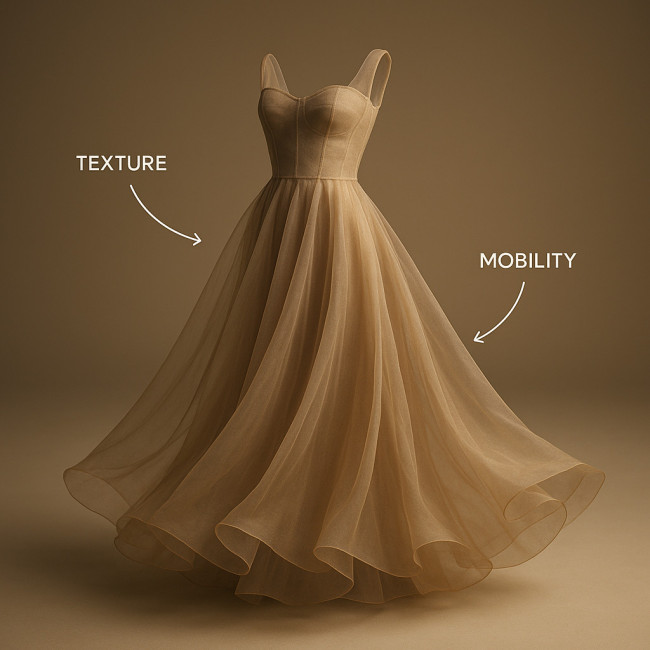
Recruiters now filter hundreds of couturier portfolios a week. Interactive 3D views shorten their evaluation time by up to 60 % because they: When a garment swings left or right on screen, they instantly gauge balance, grain and volume—details that often stay abstract in a flat croquis. The built-in zoom also reassures fabric engineers that your seams and edge stitching meet production tolerance standards.
- Show true-to-life fabric movement when garments pivot and bend.
- Reveal stitch detail at zoom-level without pixelation.
- Allow instant colourway swaps to match brand palettes.
- Reduce sample shipping costs and carbon footprint—both cited by fashion houses as top procurement metrics this year.
The key elements recruiters scan in seconds
- Silhouette clarity: 360° rotation at three predefined speeds.
- Texture fidelity: PBR (physically based rendering) shaders for velvet, organza or denim.
- Lighting neutrality: Studio HDRI so colours stay accurate across devices.
- Mobile load time: Under three seconds on 4G; use Draco compression.
Choosing the right 3D workflow
| Need | Best Tool | Learning Curve | Export Type |
|---|---|---|---|
| Rapid draping tests | CLO 3D | Medium | GLB, MP4 turntable |
| High-end photorealism | Marvelous Designer + Blender | High | USDZ, WebGL embed |
| Browser-first showcase | Fabrics XR | Low | Interactive iframe |
Need inspiration? Review the photorealistic mock-up playbook to see how object designers transform raw ideas into signed briefs.
Step-by-step roadmap: from swatch to recruiter approval
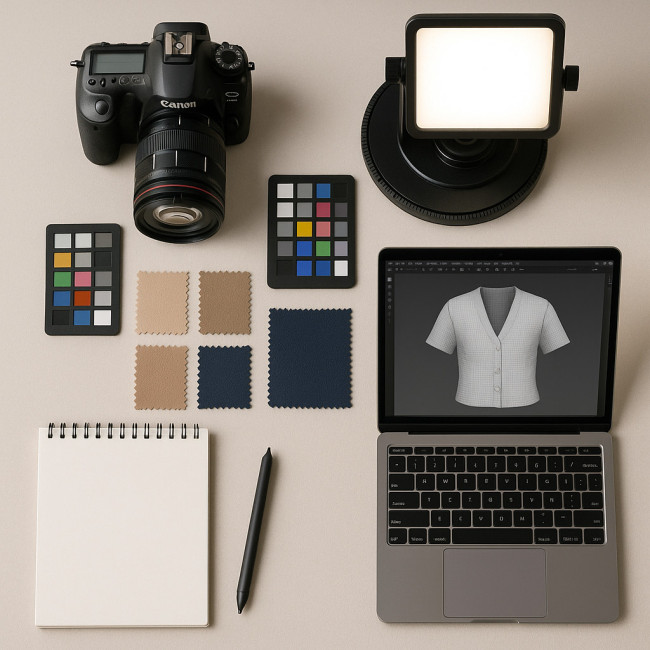
Before you dive into stitch density or pleat simulations, you need a repeatable pipeline that transforms a ten-centimetre swatch into a polished GLB file recruiters can spin on their phones. The five stages that follow—capture, build, texture, export and host—mirror the quality-control process used by top Paris ateliers. By slotting your tasks into these milestones you will shave days off sampling cycles while preserving colour accuracy, physics realism and manageable file weight. Each step is detailed below so you can benchmark your own production rhythm against industry standards.
1. Capture accurate fabric data
Use a calibrated DSLR and cross-polarised lights to photograph the swatch. Import images into a texture scanner such as Vizoo or Strata. Aim for:
- 4K resolution minimum
- Normal, roughness and specular maps
- ICC colour profile embedded
2. Build the garment base
Draft your pattern in CLO 3D or import DXF from your CAD software. Sew virtual seams, then simulate gravity at 100 % to reflect real-world drape.
3. Apply textures and lighting
Layer the captured maps, then drop an HDRI studio light. Keep the key light at 5500 K for colour accuracy. Add a subtle backlight to accentuate pleats.
4. Export recruiter-friendly files
Recruiters rarely download proprietary formats. Export one of the following:
- GLB under 15 MB for interactive embeds.
- MP4 rotation: 10-second loop, 1080 p, H.264.
- Still renders at 300 dpi for print lookbooks.
5. Host wisely
Upload GLB files to Sketchfab or Shopify's native 3D viewer. For a premium impression, embed them inside your couturier talent listing—the platform auto-generates mobile previews that notch higher in search results.
Storytelling techniques that convert
The mockup itself is only half the battle. Pair each 3D view with concise copy that answers three silent recruiter questions:
- “Is this fabric scalable?” Add yardage options in bullets.
- “What's the lead time?” Display a Gantt-style chart: concept to sample in 14 days.
- “How does it fit my brand narrative?” Insert a one-sentence mood reference, e.g. “Inspired by 1920s Art Deco evening wear.”
Need help crafting those narratives? Steal framing tips from this guide to narrative-driven profiles.
Publishing checklist before you hit “save”
- File name includes keyword: 3d-textile-mockup-organza-gown.glb
- Alt text: “3D textile mockup showcasing organza drape”
- Lazy-load attribute for videos
- Captions with CTA: “Message for full tech pack”
- Accessibility: keyboard navigation enabled for 3D viewer
Distribution channels that recruiters monitor
After publishing, amplify reach across:
- Directory newsletters: many send weekly “new talent” digests; submit before Tuesday noon.
- LinkedIn posts: Use the document share feature to upload a looping turntable.
- Virtual showrooms: Platforms such as Joor now allow GLB embeds; upload during pre-order season.
- Personal site: Optimise with the on-page SEO tactics outlined in this SEO roadmap.
Case study: 48 h turnaround that sealed a capsule deal
A Paris-based couturier converted a cold inquiry into a €28 k capsule commission in two days. The secret? A 3D mockup of a jacquard blazer rendered overnight in Marvelous Designer and embedded in the reply email. The buyer rotated the garment, checked pocket placement and approved the sample—without requesting a physical prototype.
Common pitfalls & quick fixes
- Heavy files: If GLB exceeds 20 MB, decimate mesh or bake displacement into normals.
- Colour shift on mobile: Embed a LUT or test on both iOS and Android.
- Shadow artifacts: Increase light samples or switch to path tracing.
- Brand watermark missing: Overlay discreet logo; recruiters forward files internally and you need attribution.
Interactive quiz: are your mockups recruiter-ready?
FAQ
- Do recruiters accept 3D mockups instead of physical samples?
- Yes, especially for first-round evaluations. Many luxury houses now list “digital prototype” as a submission option.
- Which file format is most universal?
- GLB because it bundles geometry, textures and lighting in one lightweight file viewable in any WebGL viewer.
- How can I protect my designs from being copied?
- Add a semi-transparent watermark and limit zoom on sensitive areas. For high-stakes pieces, share only low-poly previews until an NDA is signed.
- Will 3D mockups replace runway photos?
- No. They complement live shots by revealing construction details much earlier in the hiring or buying cycle.
Next step: wow your next recruiter
Integrate one interactive 3D textile mockup into your profile this week. Then track click-throughs and messages. If your results align with peers, you could see a 30 % lift in qualified inquiries—similar to the gains reported in this 3D preview success story.
Ready to stitch digital and physical worlds together? Update your portfolio today, monitor recruiter reactions and refine your workflow until every garment spins, zooms and converts.
